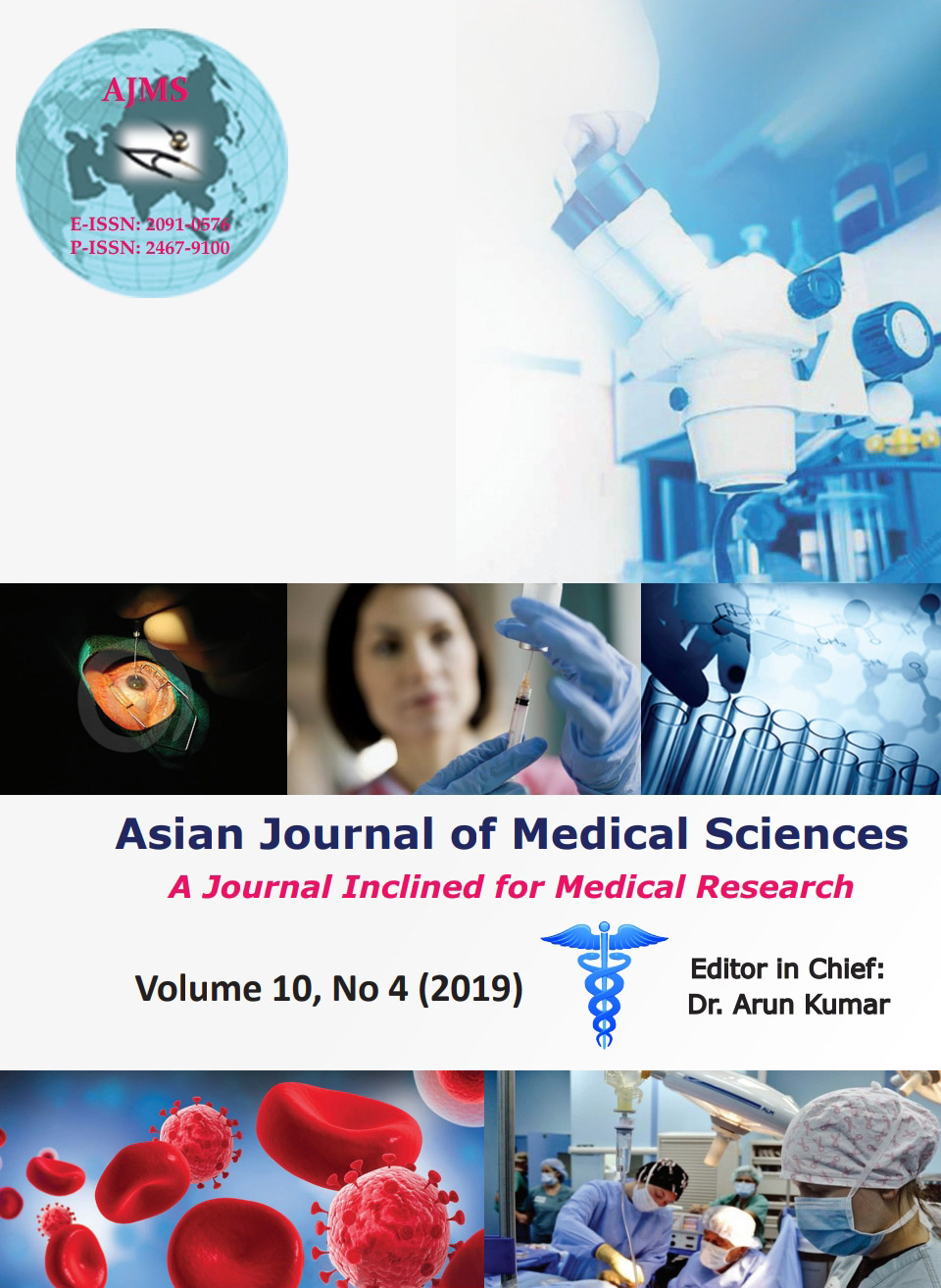Spectrum of radiological presentations among the patients of intracranial metastasis
Keywords:
Melanoma, Intracranial Metastasis, Carcinoma, Intracranial Space occupying lesionAbstract
Background: Brain metastasis has been the most common primary intracranial space occupying lesion (ICSOL) in adult patients.The main systemic malignancies presenting with high tendency to invade brain parenchyma are –lung, breast, melanoma, renal and colon cancers etc.
Aims and Objectives:
- To study the various radiological presentations in cases of intracranial metatstasis.
- To assess the radiological presentations to differentiate metastasis from other differential diagnosis.
Materials and Methods: The present cross sectional study was carried out amongst 32 patients who had been visited tertiary care hospital in Kolkata with radiological features and histopathology suggestive of metastatic lesion.
Results: The mean age of the subjects was 46.56 years and the maximum number of cases presented in 5th and 6th decades of life. CT Scan showed 75% patient had metastatic lesion appearing hyperdense on plain study and 25% had lesion hypodense on plain CT Scan. On T1 weighted images- In 75% of patient the metastatic lesions were hypointense to brain parenchyma and in 12.5% they were isointense and 12.5% they were hyperintense.T2 weighted images- In 62.5% of patient the metastatic lesions were hyperintense to brain parenchyma and in 25% patients they were isointense and in 12.5% they were hypointense. Contrast Images – 37.5% of patients had homogenous enhancement and 50% had heterogeneous enhancement and 12.5% had ring shaped enhancement. In Biopsy about 75% the metastatic lesion turned out to be metastatic carcinoma.
Conclusion: A thorough and systematic approach to radiological investigation is crucial for proper identification of intracranial metastatic lesions.
Downloads
Downloads
Published
How to Cite
Issue
Section
License
Authors who publish with this journal agree to the following terms:
- The journal holds copyright and publishes the work under a Creative Commons CC-BY-NC license that permits use, distribution and reprduction in any medium, provided the original work is properly cited and is not used for commercial purposes. The journal should be recognised as the original publisher of this work.
- Authors are able to enter into separate, additional contractual arrangements for the non-exclusive distribution of the journal's published version of the work (e.g., post it to an institutional repository or publish it in a book), with an acknowledgement of its initial publication in this journal.
- Authors are permitted and encouraged to post their work online (e.g., in institutional repositories or on their website) prior to and during the submission process, as it can lead to productive exchanges, as well as earlier and greater citation of published work (See The Effect of Open Access).




